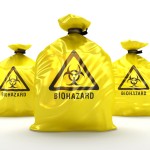I'm reading a book called Germs: Biological Weapons and America's Secret War. It was written in 2001 by three Pulitzer-prize-winning senior newspaper reporters and starts with an event most of us never heard about; immediately after the horrific 9-11 attack: a trained New York National Guard team was sent to NYC to determine if there had also been an accompanying germ warfare attack.
There's a difference between biological warfare and bioterrorism; in one sense it's a matter of scale. In another it's a matter of purpose. In biological warfare the intent is to kill or incapacitate an enemy force. Actually, utilizing the latter approach is likely to be more effective, as it ties up large numbers of support personnel, moving the sick and taking care of them in medical facilities.
Bioterrorism attacks may injure or kill a much smaller absolute number of victims, but, as the term suggests, can spread terror through a huge population base.
So why concentrate on anthrax?
Anthrax has a long history in North America, likely arriving thousands of years ago via the Bering Land Bridge. It's been a rare cause of death in the US: most cases here involved mill employees working with wool, farmhands, those who work in tanneries and, potentially, veterinarians. Anthrax was known as a disease of hoofed animals and people caught it from infected beasts. The usual form was cutaneous with a sore like a bug bite that could eventually turn into a black, usually painless skin ulcer. If unrecognized and untreated, the bacteria could spread to the blood (sepsis) with a 20% chance of death; less than 1% died if treated.
Most sources say anthrax spread from person to person never occurs; a few mention rare transmission of the cutaneous form.
But there are two other forms of the disease: the gastrointestinal kind occurs when a person consumes meat from an infected animal. It's been quite rare in the US with one case in 1942 and a second in 2010, but is also quite deadly with a death rate estimated variously at 25 to 60% worldwide and the effects of post-exposure treatment unclear.
And then there is inhalational anthrax, caused when someone breathes in anthrax spores, the dormant phase that can live in soil for many years. When this form occurs, the death rate, which used to be over 90%, even with early recognition and the best possible care, is now estimated at 45%.
The last case of inhalational anthrax occurring naturally in the US was in 1976.
So why did our military gear up to immunize 2.4 million soldiers and reservists in December 1997? After all, President Nixon, in November, 1969, had announced that our country would totally abandon the use of lethal biological weapons and confine its research in the area to defensive measures. In 1972 the US, the Soviet Union and over a hundred other countries signed the Biological and Toxin Weapons Convention, banning the use of BW.
But many of our own scientists thought this was a mistake. They were proven correct when the anthrax epidemic at Sverdlovsk occurred only seven years later.
The military anthrax vaccination program has a fairly simplistic website, designed to walk young troops through carefully selected and presented facts about the anthrax vaccine. The vaccine has been available since the 1940s and 1950s and was tested in mill workers in the late 1950s. The modern version was licensed in the United States in 1970, and in January, 2002, the FDA allowed the company making it to begin routine distribution from a newer manufacturing plant. The same company is working on a new recombinant version
An October, 2011, Washington Post article discusses the thorny issue of testing the effectiveness of the immunization in children.
Even the safest vaccines have some side effects; the vaccine may not protect versus inhalational anthrax caused by altered strains of the bacterium and there's no generalized threat at present.
But, what if?



